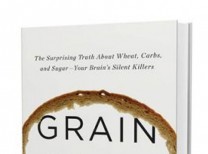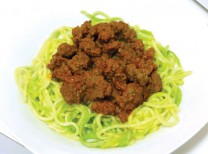After a hard workout the body develops tissue inflammation as an immune response to the wear and tear. We don’t question why, nor do we worry whether the pain will go away. How can we explain the millions of people who experience chronic pain each day, uncorrelated to exercise?
Dr. Osborne, founder of glutenfreesociety.org, says, “One of the most common side effects I see that gluten causes is inflammation in the muscle and joints.” Most doctors specializing in arthritis, joint pain, and autoimmune disease rarely even consider foods as an important factor in the development of these conditions. Perhaps we should take a deeper look at how grains play a role in pain.
An important clarification to first make, not often explained in its entirety, is that all grains contain some form of gluten. The glutens of wheat, rye, barley and oats are well documented because of their special type of gluten called alpha-gliadin, discovered in early research of celiac disease. Gluten, however, is an umbrella term for hundreds of different proteins, some even more inflammatory than alpha-gliadin, which are even found in “gluten-free” grains such as corn and rice.
The peptides in grains, especially wheat, irritate the intestinal lining to various degrees depending on one’s gut health. Understand that this is true for all humans, not just those with celiac disease.1 All grains, which are the seeds of grasses, have a protective covering and natural chemicals that have ensured their survival and reproduction over time. These protective properties inflame and damage the gut. Dr. William Davis of Wheat Belly simply states, “wheat and grains powerfully inflame the body.”2
Today we consume grain-heavy diets, high in molds and pesticides. Added life stress and environmental toxins contribute to the perfect storm for leaky gut syndrome. When the gut becomes “leaky,” the food particles passing through the intestine enter the blood stream, where they should not be, triggering the immune system to attack. Due to the constant heightened immune response, the body misinterprets what the invader looks like and attacks the wrong cells, often the body’s own tissue.
We know inflammatory reactions are designed to heal and protect the body in response to damage. If you have a genetic predisposition to inflammation in the joints or muscles, this would result in and explain the unresolved chronic pain perpetuated by consuming grains.3
As you can see, ruling out food sensitivities and assessing the health of the gut lining for those with chronic joint pain is essential, as gluten is a common cause of joint and muscle pain.4
Here are a few key tips to reverse your chronic aches and pains:
• Remove the irritant. Make a goal to go grain-free. At minimum, go gluten-free.
• Replace those grains with vegetables and some fruits, and healthy fats. This promotes alkalinity and increases vitamin and mineral intake.
• Repopulate: add in beneficial bacteria for gut health with probiotics or fermented foods.
• Restore: Discuss with your health practitioner about supplementing with magnesium, calcium, omega-3 fatty acids, vitamins C, D, K, glucosamine chondroitin, and B-vitamins for joint and muscles health.
Tiffany is a certified nutrition consultant and functional diagnostic nutrition practitioner and can be reached at (760) 285.1221. www.GlutenFreeWithTiffany.com
1. http://www.ncbi.nlm.nih.gov/pmc/articles/PMC1954879/ 2. http://www.wheatbellyblog.com/2015/05/lose-the-wheat-and-grains-lose-the-inflammation 3. http://onlinelibrary.wiley.com/doi/10.1002/mus.20652/full 4. 24 Hvatum M, Kanerud L, Hallgren R, Brandtzaeg P. The gut-joint axis: cross reactive food antibodies in rheumatoid arthritis. Gut. 2006;55(9):1240-1247.









































Comments (0)